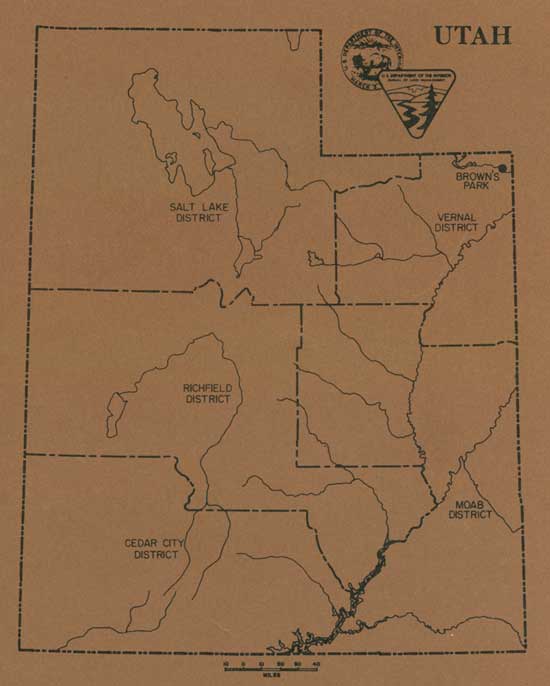|
John Jarvie of Brown's Park BLM Cultural Resources Series (Utah: No. 7) |

|
INTRODUCTION
"The history of the world," wrote Thomas Carlyle, "is but the biography of great men." Greatness, like beauty, is in the eye of the beholder and simply because the lives of the famous are thoroughly recorded, it does not necessarily follow that thy are historically more important than the multitudes of the unsung. Monarchs and presidents have been enthroned, dethroned, elected, and rejected, not by the great figures of their day, but by the combined efforts of average citizens. Leaders must have a following; philosophers must have an audience. "The decisive factor in a nation's history," claimed the philosopher Ortega, "is the common man." George Sheehan was blunter: "Our herd's future, the future of the race, has always depended on its innumerable mediocre men." History, if it is to be relevant, must, therefore, reflect not only the lives of the great but also the lives of the common and mediocre (Webster defines mediocre as being ordinary, average, between extremes).
An informal survey of an audience attending an evening campfire program in the Flaming Gorge National Recreation Area during the summer of 1979 indicated that none of the over 100 people were descendents of monarchs or presidents. Nearly all were descendents of farmers, ranchers, merchants, miners, and public servants. The biography of John Jarvie and the restoration of his property, therefore, carry great potential for helping people to understand their heritage. Jarvie was a leader in his community and an important pioneer on a local level, but his fame was not national in scope. His story provides a picture of life as it existed for the common man in a frontier society; a picture that modern men can easily relate to. The Jarvie story reveals much about the nature of life in Brown's Park, and the Brown's Park story reveals much about society on the frontier.
The frontier, according to Frederick Jackson Turner, was the primary factor working to create unique institutions in America and unique characteristics in Americans. As pioneers entered new areas, they brought with them the politics, law, language, and culture of Europe and the East. Their culture was forced to adapt to the new environment of the frontier first by reverting to a primitive life style and eventually by discarding some ill-suited institutions and assimilating others regarded as vital. This process of rebirth on the edge of civilization gradually resulted in the Americanization of people and customs. Turner wrote: "The existence of an area of free land, its continuous recession, and the advance of American settlement westward, explain American development."
The Brown's Park society, due to its limited population and its isolated nature, provides an excellent laboratory for examining the Turner "frontier hypothesis." The mountain men, cattlemen, settlers, and outlaws all moved through Brown's Park in distinct waves reverting at first to primitive individualism and finally forming a distinct culture and cultural institutions. Mountain man rendezvous, cattlemen's associations, and vigilante groups developed as answers to needs which could not be met by unconcerted individual efforts. Attitudes and actions were forged by the environment, Turner fashion, in Brown's Park. The characters who populated the valley became distinctly American.
The characters of Brown's Park, including John Jarvie, have taken on almost legendary natures over the years. However, they have not all become Owen Wister stereotypes and did not always follow the cowboy code of his Virginian. They were not all white. They were not all honorable. They were not all self reliant. They were often philosophical as well as physical. In short, they were a cross section of common citizens living day to day lives in the best way they knew how. They were Ortega's "decisive factor" and Sheehan's "mediocre men." For that reason alone, the stories of John Jarvie and Brown's Park are relevant and worth relating.

| <<< Previous | <<< Contents>>> | Next >>> |
ut/7/intro.htm
Last Updated: 21-Nov-2008